Hughes and star pupil Ricky Dietrich listen to Paul Chek.
Over the duration of five days, I ate, slept, rode, thought, stood, sat, breathed, sweated, drank and worked out like a professional motocross and off-road dirt bike racer. Granted, I'm not a professional dirt bike racer. I'm not even close. But I tried my hardest to find out just what these guys and gals go through to win. I learned a lot about commitment, hard work and getting your head truly in the game.While embedded in Ryan Hughes' program I went through three core-busting workouts, two 100-degree sessions in an ultraviolet sauna, a two-hour consultation with one of the country's leading holistic exercise professionals and got eight hours of sleep each night inside Ryno's dormitory. I did a 30-minute moto, three 20-minute motos, a series of start and corner drills and a pile of one-lap timed sprints with really fast guys and gals. I stopped eating gluten, rejected nonorganic food and gave up Gatorade. I became conscious that everything you do-everything you eat, the music you listen to, the way you walk, talk, think and speak-affects the way you effectively ride a motorcycle.Ryan Hughes' program is all-encompassing. So much so that I'm conscious of the position I sit in as I type this story because of its potential effect to my on-the-bike performance.This is Ryno's world: a world, according to Hughes, that will change the way people train for motocross at the elite level. It might sound crazy. And a lot of people in the world of professional motocross have put parts of Hughes' ideology outside the walls of sanity. But I wouldn't be so quick to doubt its effectiveness or legitimacy. Talk to Ryno with an open mind and you just might believe. Spend a week in his world like I did and you'll be buying organic food like James Stewart buys Italian cars.Ryan Hughes has personally gone through every fad and phase of training for this sport and, through that experience, believes he's fine-tuned the secrets to building champions.If this was a how-to story, I could sum up Ryno's riding technique tips into four general areas: feet, hips, core and eyes. But riding is the end game at this camp and everything in your life goes together to make the riding the best it can be.Trying to contain Ryan Hughes and his interconnected theories on physical, emotional, spiritual, neurological, nutritional and mental well-being inside a magazine article isn't easy. If you look at motocross racing as a puzzle, with each piece representing an aspect of your life, then this will kind of make sense. There are a lot of different shapes. Let's put some of what I learned together.Riding Technique
There is a new-school technique for riding a motorcycle. Riders like James Stewart and Ryan Villopoto do it naturally and it's all about body position. Remember: In Ryno's world, everything is connected and it starts with your posture.To be most effective on a bike you want to be in a position that will have you ready to react. You want to be in charge. You need to be on the front of your feet, your back needs to be elongated, your chest should be expanded and forward and your hips need to be rolled forward or "unlocked." Your knees should be bent. Imagine doing a squat in the gym and you'll get the idea.Improper riding position can be easily demonstrated while standing on flat ground. If you curve your back forward, stand on the middle of your feet and let your hips roll back so your butt sucks into your pelvis you'll essentially be in an emphasized slouch. Have a buddy give you a shove in any direction and see if you can react and hold your ground. You can't. You're at the mercy of forces surrounding you and have little input into your own position in the world.If you reset your posture to a correct position you'll be able to react and move efficiently. Your legs will be stable and strong and your upper torso will be elongated and alert. You can effectively grip with your ankles and knees since you're not holding the weight of a slouching upper body against the acceleration of your bike.But it's a lot more than just being ready-and this is where the all-encompassing aspect of Ryno's deal comes into play. If your back is elongated, your spinal column is expanded and your nervous system is on full alert and ready to act. Your diaphragm can expand and you can breathe properly. Your brain recognizes where your body is (since you've trained it to do so through your other exercises) and is in tune with your surroundings. Your joints are extended into their most open form for maximum range of motion. It goes on and on and on.After a quick lesson from Hughes I put this form to use during some test sessions. Immediately, I felt more forward on the bike and aggressive. I was automatically in a better cornering position since I was up front on the seat and a weight was miraculously lifted off my arms. My legs truly took more of the load (which makes sense since they're bigger than my arms) and my body stayed put on the bike since I was gripping with my legs. I personally felt more in control everywhere, even when I got tired. It's a comfortable feeling riding the bike instead of the bike pulling you around the track.But I still got tired. But it was a different kind of tired. It was in my abs and my hips and my legs. And the rest of Ryno's athletes passed me like I was standing still even after a healthy head start. They should, though. Since they're super fast and all that. But I want to get stronger and faster. Who doesn't? That's why I was excited for the gym workouts.
Slowest goes first as Ryno drops the gate.
Exercise And Training
A lot of Ryno's program is working out and training off the bike. Most of his techniques were learned by working with one of the most respected kinesiology minds in the country, Paul Chek.Paul Chek is the author of books on exercise and living well. He hosts talks all over the world and has a ton of products and programs for exercise professionals and coaches on his site www.chekinstitute.com.Chek is the kind of guy who can tell things about how you ride by watching you walk. He can also tell you how many head injuries you've had by looking into your eyes.We, everyone who works with Hughes on a regular basis from Ricky Dietrich to freestyle daredevil Robbie Maddison to WMA legend Jessica Patterson, were lucky enough to go to his facility for a private group talk. Once we were there, Paul Chek dropped bomb after bomb of physiological knowledge on us. I was transcribing my voice notes from our meeting and stopped at 2000 words before I figured out that Chek is too big of a story for an article about dirt bikes. But his theories on exercise and training fit right in.Ryan Hughes is a student of Chek's. And he studies and practices the C.H.E.K. Institute's (Corrective Holistic Exercise Kinesiology) curriculum every day. Once I was there and listened to Chek talk I began to see where a lot of the connectivity inside Hughes' program comes from. For instance, there are these Chek-isms.Chek-ism number one: If it looks ugly, it is.Basically, if you're not doing an exercise with the proper form, you're not doing the exercise at all. You might as well sit on the couch. Proper form, posture and technique combined with the correct training tools for the job (such as Swiss ball balance skills and kettle bell movements) are necessary to improve your body for riding a motorcycle. This is a component of the Form Principle which takes into consideration that the nervous system always remembers the last traumatic incident it's been through. So don't put it through an improper traumatic incident. Your last set of an exercise should be perfect.Confused? Lost? Wondering what this has to do with riding a dirt bike more effectively? I was for a minute, too. But if you think about what your body goes through while you're riding, what it has to react to, the practices of Chek and Hughes are very logical."The purpose of conditioning and going into a gym is to have a controlled environment so that under the guidance of a coach you can master all of the different types of exercises that are necessary for you, individually, first and then necessary for the sport second," Chek said. "This way, you don't have to worry about crashing your motorcycle or making a mistake. Once you learn to squat properly in a gym you don't worry about your technique when you're standing on your footpegs and you squat a million times every time you go around a track. If you've done it right in the gym, it's already built into the system."Everything comes back to posture and form. Posture is such an important part of the Hughes training program that, like I said earlier, I always think about it now. I sit at my desk differently and drive differently. And it's all Chek's fault who says, "Ideal posture is the position from which the musculoskeletal system functions most efficiently."All of this can and does go deeper. More Chek-isms are "Failing to plan is planning to fail" and "If you can't, you must." Each simple phrase has about 2000 words of explanation and interaction to every component of your body and mind.And that's how it goes all afternoon. It gets to the point where you want Chek to slow down and write you a book about everything he's telling you so you don't miss anything. Oh, wait...he already has.In Ryno's gym all of this is put into practice. My first workout with the guys was an eye-opener. After watching the first day I jumped in with Hughes as my partner and we went through a standard circuit. All of the workouts are circuit based and high-intensity. Some days are more strength-specific and others are more balance, speed and agility themed. But they all involve sweat. And burning core muscles. And, for me, falling off of round balance balls even after grabbing the lightest weights possible. I've worked out my whole adult life. But never like this.My favorite workout story to tell from Ryno's place is the yard workout. In a large, flat rectangle of grass below the gym there were eight stations each inhabited by a soon-to-be-hated piece of workout equipment. Each station had a specific torture, whether it was jumping up on a step or swinging a weighted ball over your head while balancing on another ball, and each torture lasted one minute. Sometimes they do two minutes but were nice to me with only one.About halfway through one circuit (yes, four minutes) I didn't want to play anymore. Alex Martin (professional MX rookie) was laughing at me as I rolled in the grass after failing to keep my balance more than once. I hated picking up the medicine balls and throwing them across the field. And I wasn't looking forward to jumping up on that stupid box. Then, we did it again.In the gym it was more of the same for two other workouts. We'd run from station to station. We'd balance on a diabolical green ball and wave a heavy object above our heads. We'd stare at the clock and try to speed it up. Simple things like walking across the gym with little weights in your hand and touching your knees each step simply wore my ass out. Even the Superman-where you simply lie with your belly on a Swiss ball and try to fly like Superman without touching the ground-is hard! But something strange happened after all the sweat and pain. I became energized!And that, too, is part of the plan. Hughes loves to work hard, but he's a firm believer in having more energy when you're done working out than you had before you started. His system works. And I dropped five pounds in five days by just eating, riding and working out like Ryan Hughes. Speaking of eating...Nutrition and Diet
Ryan Hughes hates gluten. He calls it "bad sh*t" and believes that even if you're not allergic to it (or Celiac), it is doing bad things to your body like disabling your lower intestine and turning off your lower abdominal muscles-which are crucial for stabilizing and strength. By eliminating it he claims you'll have more energy and be able to maintain higher energy levels for longer periods of time. What is gluten? Well, it's a component of wheat. So it's everywhere (including everything made out of wheat flour-bread, flour tortillas, pasta, etc.) and it's hard to get away from at first. But I did manage to eliminate gluten from my diet while I was there and for the next month or so on my own.Hughes is also a firm believer in organic foods. He orders free range, grass-fed organic meats from the Midwest and has it delivered to his home. He shops for, grows and eats only organic vegetables and fruit and even distributes his own line of organic snacks through Ryno Organics (www.rynoorganics.com). Everything that is processed is generally bad. Simple sugars and starches are bad. Carbohydrates are obtained through vegetables, and water is essentially the only liquid he drinks to rehydrate."Do you see anything in nature that is fluorescent blue, orange or green that you can drink?" Hughes asked as we drove through Temecula, California's countryside. "Only drink water. And you should be drinking half your body weight in ounces every day."I never want to tell people they can't do something or eat something. So, I won't tell you to not eat this or that. I try to suggest eliminating a few things that are bad for you and your energy, and if someone is eating something, I'll tell them whether I think it's right for their body or not," Hughes said.I went all-in on the Hughes program and I feel great. Honestly, not ingesting vast amounts of sugar and dropping processed food out of my diet-along with working out every day-had me feeling great. I ate a lot of corn-tortilla chicken tacos. I ate a lot of vegetables and fruits and nuts. I even ate at Outback Steakhouse with Jessica Patterson, Vince Friese and Alex Martin on Wednesday's "family" night. Salmon and sweet potato-yum! I've never seen the bread untouched on a table at Outback my entire life until that night.There has to be some placebo effect here since I was undoubtedly euphoric after being able to train like a real pro for a week, but my energy levels were peaking even as I settled back into the office and slipped back into the real world weeks later.Head Games
This is a little hard to get into words, but an equal dimension of Ryan Hughes' training program deals with the mental game. This involves emotions, moods, attitudes and the way you interact with other people in your life. It even gets down to what you think about when you go to sleep and what music you listen to. Ryan Hughes meditates often. He encourages the athletes he trains to do the same. And throughout the group of "students" there is a common sense of family. They get along, help each other, talk about their ride or workout and laugh and joke around. It's a nice environment to be in for sure, especially if you're competing in a high-stress race series for a living.It goes as far as track prep. Ryno doesn't like his private riding facility to be prepped perfectly. He wants the team to work and suffer through a beat-up track so when they get to race day, and the track is perfect, they're stoked.In the end, the knowledge I gained at Ryan Hughes' training program has stuck with me more than most lessons I've learned on this job. The complexity of a seemingly simple task-training to ride dirt bikes-really blew me away at first. But I soon realized that to be the best, to excel at the highest level of competition, certain commitments must be made and your "program" has to be dialed in. Why not train all dimensions of your life?What's It Cost?
Ryan Hughes isn't afraid to tell you what it'll cost to get his championship-winning training. Here's the other cost of winning:$3000/month: Total MX training, strength and conditioning coaching, nutritional guidance and diet advice, access to gym and private riding area and unlimited consultation with Ryan Hughes. He's a text or phone call away.$3600/month: All the above but you get to live in the dorm, too! Covers room and utilities.$750/week: Just want a couple weeks to fine-tune your conditioning and training? You can train with Hughes for as long or as short as you want.


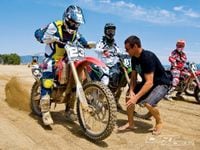
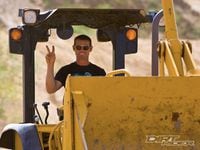
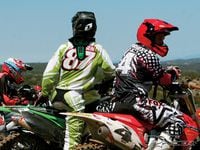
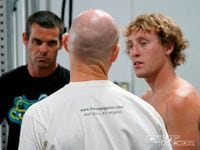
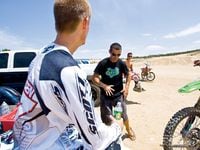
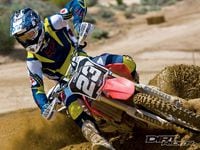
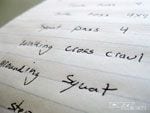
/cloudfront-us-east-1.images.arcpublishing.com/octane/JMCDU47IXNAABEK3HT7255TFSU.jpg)
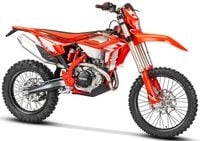
/cloudfront-us-east-1.images.arcpublishing.com/octane/ETCSEDWJV5BGXGHEZFINNZGLMA.jpg)
/cloudfront-us-east-1.images.arcpublishing.com/octane/MD56OW3SRRCBJFWV5F36BOZYUE.jpg)
/cloudfront-us-east-1.images.arcpublishing.com/octane/D3GB6FLJVVDDVCJPJR3ZG276DI.jpg)
/cloudfront-us-east-1.images.arcpublishing.com/octane/PXDBJAHBNFHIPIII2RETRYIHV4.jpg)
/cloudfront-us-east-1.images.arcpublishing.com/octane/IP7MOVDXWFCGJH5HQHH4T44UJI.jpg)
/cloudfront-us-east-1.images.arcpublishing.com/octane/Y4EZFRIEQRE7ZFINGRA2ONFGGQ.jpg)
/cloudfront-us-east-1.images.arcpublishing.com/octane/UIVE2WGHJRCGNLMDXYO2YR27PA.jpg)
/cloudfront-us-east-1.images.arcpublishing.com/octane/XVCN7KNMTFDHZMKMCH5DU5YZRU.jpg)
/cloudfront-us-east-1.images.arcpublishing.com/octane/DTPGQUZAIZAZNPRXG4V6QATIVM.jpg)
/cloudfront-us-east-1.images.arcpublishing.com/octane/Y7EYU3ZTTJFLZEA75REMWWBLSQ.jpg)
/cloudfront-us-east-1.images.arcpublishing.com/octane/TGSYZNI7UVEI7K7ULLVVQ324A4.jpg)
/cloudfront-us-east-1.images.arcpublishing.com/octane/XGKGRRHXPNDRBGPCV4FUAARLRE.jpg)
/cloudfront-us-east-1.images.arcpublishing.com/octane/4MNSJWN6UFEMTDQHVLM52C3X44.jpg)
/cloudfront-us-east-1.images.arcpublishing.com/octane/U6X2X4HGPNCYTNMPYOAN4IIJ5Q.jpg)
/cloudfront-us-east-1.images.arcpublishing.com/octane/B6ZIPVYSKVA3LHDJTGAEEMN4VM.jpg)
/cloudfront-us-east-1.images.arcpublishing.com/octane/I24MVSJBNZDALNIYUHHPVFWNZM.jpg)
/cloudfront-us-east-1.images.arcpublishing.com/octane/SIAXQ2ZOPNBYBLPKJPCHIYGG6A.jpg)
/cloudfront-us-east-1.images.arcpublishing.com/octane/2K6UXOH6I5E4HBKQVMPKA74RR4.jpg)
/cloudfront-us-east-1.images.arcpublishing.com/octane/B52ZU5WMNVF4FDYDONLARN26VU.jpg)
/cloudfront-us-east-1.images.arcpublishing.com/octane/7J4I2LIBRZB4DILKSLG54USBH4.jpg)
/cloudfront-us-east-1.images.arcpublishing.com/octane/LALZDRL5ORHUDGKA562HKNQQBM.jpg)
/cloudfront-us-east-1.images.arcpublishing.com/octane/4QSCGKH4JZACROBHROI55V6UBM.jpg)